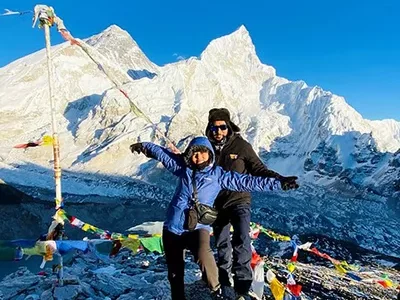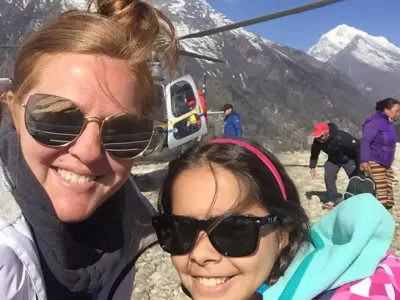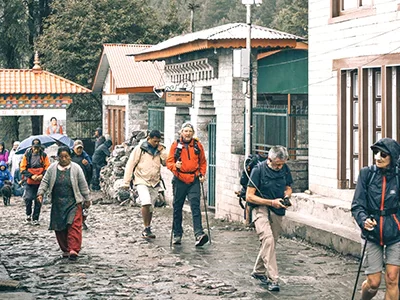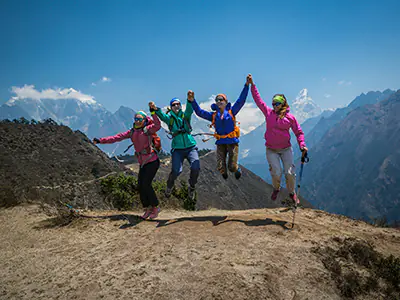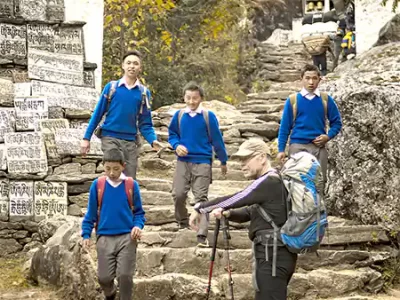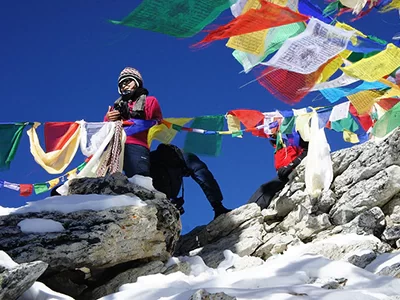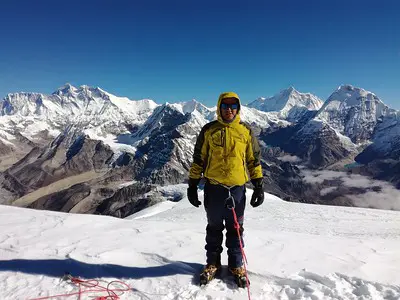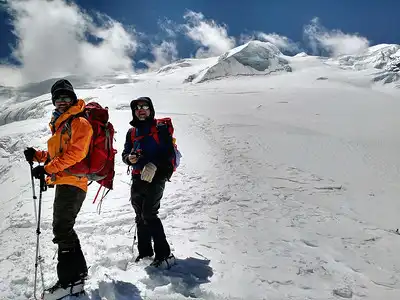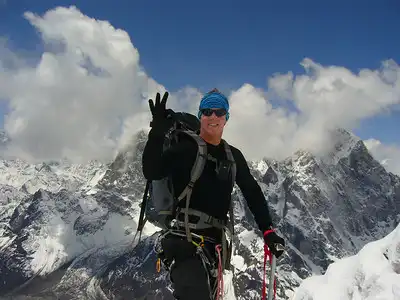Nestled amidst the awe-inspiring Himalayas in Nepal’s Everest region, Khumjung stands as a testament to the enduring spirit and rich culture of the Sherpa people. This traditional village, with its stone houses and prayer flags fluttering in the wind, offers a glimpse into a way of life deeply connected to the mountains.
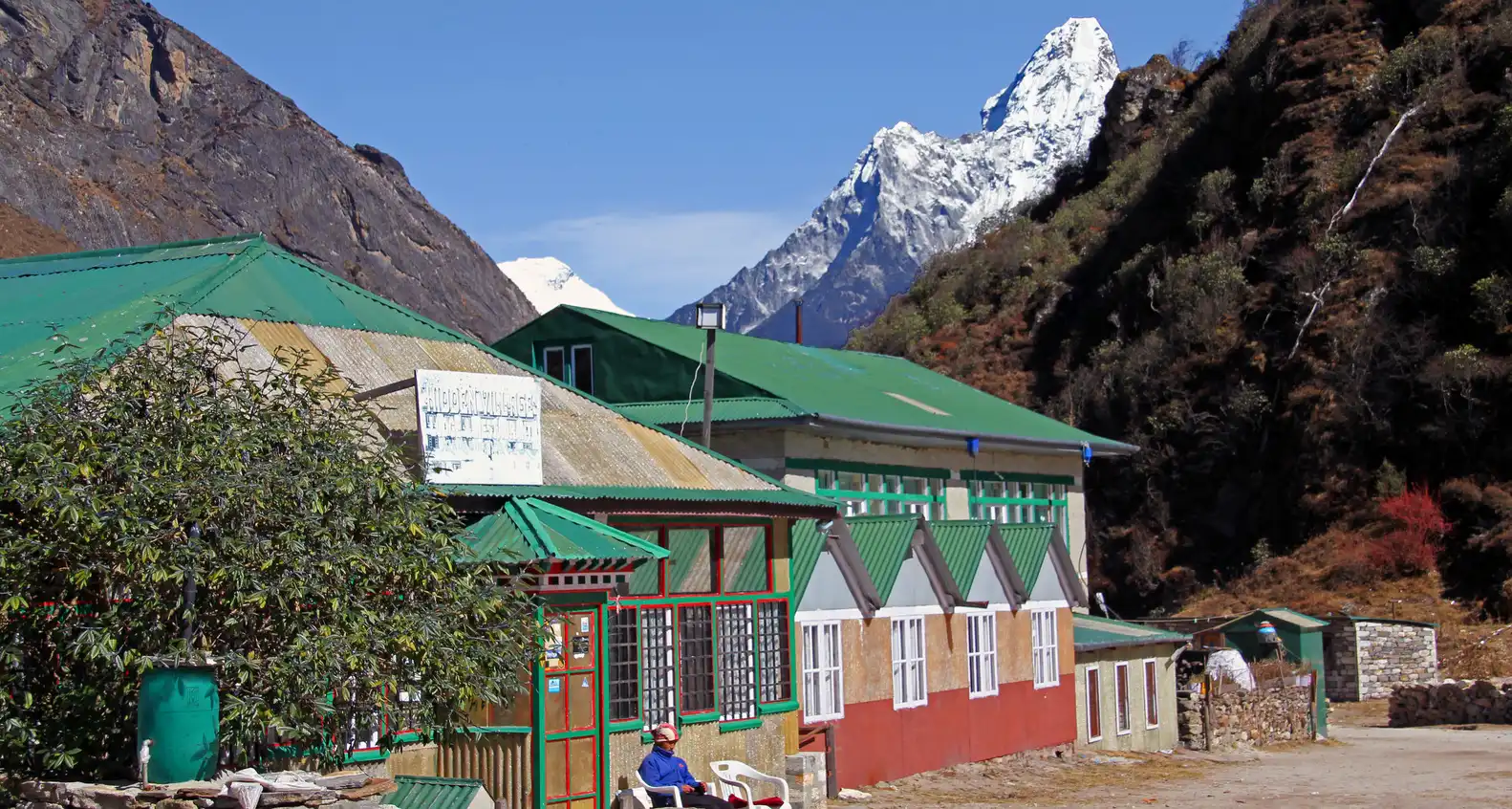
Khumjung’s allure extends beyond its cultural significance. Its strategic location near popular trekking routes, including the iconic Everest Base Camp trek, makes it a favored stopover for adventurers and nature enthusiasts.
Exploring Khumjung: Key Highlights
- Authentic Sherpa Village: Experience the warmth and hospitality of the Sherpa community in this place. Interact with people and learn about their customs, experiencing the local way of life firsthand.
- Khumjung Monastery: Visit this historic monastery, home to a prized statue of Guru Rinpoche. Witness the monks’ rituals and experience the serene ambiance of this spiritual sanctuary.
- Panoramic Mountain Views: This place boasts breathtaking vistas of the surrounding Himalayan giants, including Everest, Ama Dablam, and Lhotse. Capture postcard-perfect photos and create lasting memories of these majestic peaks.
- Khumjung Altitude and Weather: At 3,790 meters (12,434 feet), this place experiences a typical high-altitude climate. Prepare for cool temperatures, especially at night, and be mindful of acclimatization.
- Gateway to Trekking Adventures: Located near popular trekking routes like Everest Base Camp and Gokyo Lakes, this place is an excellent starting point or acclimatization spot.
- Khumjung Village Life: Wander through the narrow alleys of Khumjung village, observing the traditional architecture, prayer wheels, and Mani stones. Interact with friendly locals and experience the rhythm of Sherpa life.
Everest Base Camp Trek
Everest Base Camp Trek with Helicopter Return
Luxury Everest Base Camp Trek
Khumjung: A Living Tapestry of Sherpa Heritage
Tucked away in the majestic Everest region of Nepal, the village of Khumjung resonates with centuries of history and culture. It’s where Sherpa traditions thrive, and the iconic Khumjung Monastery beckons travelers from across the globe.
Khumjung Monastery: Where Spirituality and Culture Converge
The Khumjung Monastery, a beacon of Buddhist devotion, embodies the profound faith of the Sherpa people.

Its legacy spans centuries and remains a vital hub for the community’s spiritual and cultural life.
- Architectural Grandeur: Traditional Sherpa craftsmanship adorns the monastery, with its ornate wooden doors, vibrant prayer flags dancing in the breeze, and tranquil courtyards inviting contemplation.
- Sacred Treasures: Within the monastery’s walls, visitors encounter ancient murals, intricate thangkas (religious paintings), and statues of revered Buddhist figures. The alleged Yeti scalp is a particularly captivating artifact that adds an enigma to the monastery’s allure.
- A Haven for the Soul: The Khumjung Monastery provides a sanctuary for monks and locals to pray, meditate, and learn. The sacred space welcomes travelers to witness religious ceremonies and soak in its serene atmosphere.
Upholding Sherpa Traditions in Khumjung Village
Beyond the monastery gates, the entire village of this place actively preserves the Sherpa way of life. The residents proudly carry their heritage, passing down customs, language, and wisdom through generations.
- A Life in Harmony: Villagers maintain a deep connection to the land, practicing sustainable farming and animal care. Their distinctive clothing, cuisine, and festivals showcase their unique cultural identity.
- The Strength of Community: This place thrives on a strong sense of togetherness. Villagers collaborate to maintain trails, protect natural resources, and support each other.
- A Welcoming Embrace: This place opens its arms to visitors, offering opportunities for meaningful cultural exchange. Interacting with the locals provides a unique opportunity to understand Sherpa culture and their harmonious coexistence with the Himalayas.
Khumjung’s Altitude and Climate: Navigating the Himalayan Heights
Khumjung, a captivating village in Nepal’s Everest region, offers travelers breathtaking mountain panoramas and a vibrant Sherpa culture. However, its lofty altitude and distinctive weather patterns significantly shape the village’s landscape and residents’ way of life. Understanding these elements is critical to experiencing this place to the fullest.
Khumjung Altitude: Embracing the Heights
- Reaching New Heights: This place boasts an impressive elevation of about 3,780 meters (12,402 feet). Its high-altitude location means thinner air and unique environmental challenges.
- Climate’s High-Altitude Influence: The altitude significantly cools Khumjung’s climate, making temperatures noticeably lower than in areas closer to sea level. The air also carries less moisture, and the sun’s rays feel more substantial due to the thinner atmospheric shield.
- Adapting to the Heights: The altitude dictates the types of plants that flourish in this place. Hardy shrubs, vibrant alpine meadows, and resilient coniferous forests paint the scenery. The Sherpa people have skillfully adapted their way of life to this environment, relying on a blend of agriculture, animal husbandry, and tourism for their livelihoods.
Khumjung Weather: A Symphony of Seasons
Throughout the year, this place experiences distinct weather patterns, each with unique charm and challenges.
- Spring’s Awakening (March-May): Spring ushers in warmer temperatures and longer days. The hillsides erupt in a riot of color as rhododendron forests bloom. Clear skies and pleasant weather make this a popular time for trekking.
- Summer’s Monsoon Embrace (June-August): Summer marks the monsoon season in Nepal. This place experiences frequent rainfall, which can transform trekking trails into muddy paths. However, the rains also rejuvenate the vegetation, creating a tapestry of lush green landscapes.
- Autumn’s Golden Glow (September-November): Many consider autumn the prime time to visit this place. The monsoon recedes, leaving behind crystal-clear skies and breathtaking mountain vistas. The dry, comfortable weather is perfect for trekking and outdoor adventures.
- Winter’s Icy Touch (December-February): In this place, winters are cold, with temperatures often dipping below freezing, particularly at night. Snowfall is frequent, draping the village and surrounding peaks in a pristine white blanket. Trekking remains possible but requires careful preparation and appropriate gear.
Traveler’s Guide: Embracing Khumjung’s Weather
- Acclimatization is Key: High altitudes necessitate proper acclimatization before any strenuous activities. Spend a few days in this place or a nearby village at a similar elevation to allow your body to adjust to the thinner air.
- Adapt with Layers: Dress in layers to stay comfortable as temperatures shift throughout the day. Even in warmer months, mornings and evenings can be surprisingly cool, while the midday sun can be pretty intense.
- Sun Protection is Essential: The sun’s rays are more intense at high altitudes. Wear sunscreen, sunglasses, and a hat to safeguard your skin and eyes.
- Hydration is Key: Water is essential! Drink up. Dry, avoidable exertion at high altitudes can quickly deplete your body’s fluids.
- Footwear Matters: Opt for sturdy, comfortable hiking boots with good ankle support for trekking. The terrain can be uneven and challenging.
- Be Rain-Ready: If you’re visiting during the monsoon season or trekking in the shoulder seasons, pack waterproof and breathable rain gear.
- Respect the Environment: Tread lightly and help preserve this place’s natural beauty. Adhere to responsible trekking principles, leave no trace, manage waste properly, and respect local customs.
Everest Base Camp Trek for Beginners
Everest Panorama Trek
Everest High Pass Trek
Khumjung Village: Where Sherpa Traditions Thrive
Nestled high in the breathtaking Everest region of Nepal, Khumjung village offers a captivating window into the Sherpa way of life. With its distinctive architecture, welcoming locals, and commitment to sustainable tourism, this traditional settlement creates an unforgettable experience for every visitor.
Life in Khumjung: A Blend of Old and New
Centuries of adapting to the Himalayan environment have shaped this place’s unique layout.
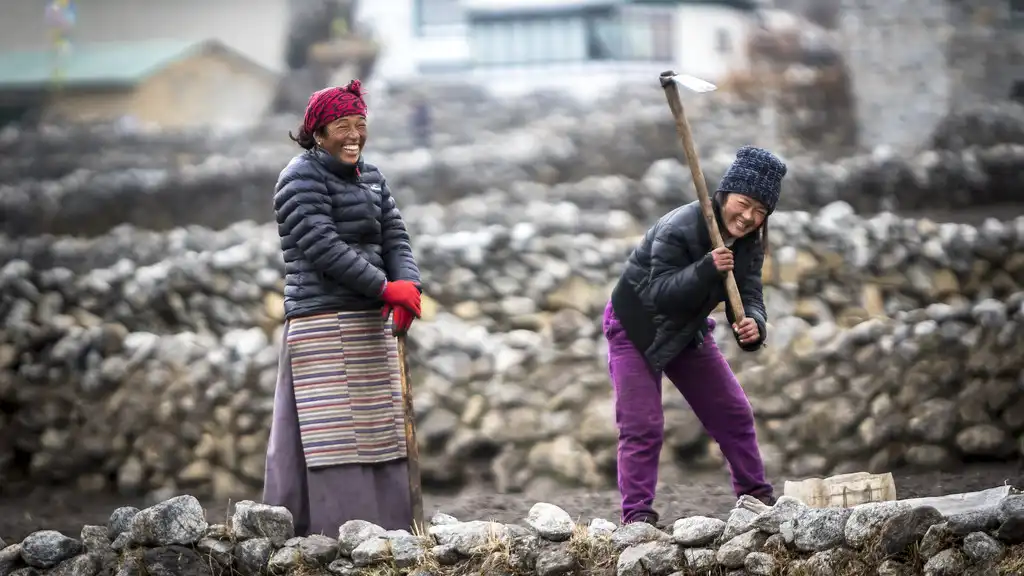
Stone houses adorned with vibrant prayer flags line the narrow, meandering streets. The village square buzzes with activity as locals gather to connect and trade.
- Architectural Treasures: This place houses are a testament to traditional Sherpa craftsmanship. Built to withstand the harsh mountain climate, they feature sturdy stone walls, exposed wooden beams, and slate roofs, creating a beautiful blend of form and function.
- The Rhythm of Daily Life: Villagers maintain a deep connection to the land, working in agriculture, raising livestock, and welcoming visitors. Observe their daily routines, from tending to their fields to greeting trekkers warmly.
- A Tight-Knit Community: This place’s strong sense of community shines through. Residents actively collaborate to preserve their traditions and protect their environment, offering visitors a chance to experience genuine Sherpa hospitality and learn about their customs.
Hidden Gems: Beyond the Village Center
This place boasts several attractions that enhance any visit:
- Hillary School: Founded by the legendary mountaineer Sir Edmund Hillary, the school in this place educates local children. Visitors can interact with students and teachers, witnessing the village’s dedication to education.
- Traditional Bakeries: Savor the flavors of Sherpa cuisine at local bakeries, where time-honored recipes create delicious bread and pastries.
- Scenic Trails: Explore the trails surrounding this village, take in panoramic views of the Himalayas, and enjoy the area’s natural splendor.
Khumjung and Eco-tourism: A Sustainable Partnership
Trekkers heading to Everest Base Camp and beyond often make this place a crucial part of their itinerary. The village has wholeheartedly embraced eco-tourism, ensuring that tourism benefits the community while minimizing its environmental impact.
- A Welcoming Rest Stop: This place provides cozy lodges, tea houses, and restaurants where trekkers can rest, recharge, and acclimate to the high altitude.
- Boosting the Local Economy: Tourism provides income for this place’s residents, supports local businesses, and creates employment opportunities.
- Protecting the Environment: The village actively promotes responsible tourism practices, including waste management and conservation efforts, to safeguard its pristine surroundings.
Your Gateway to Himalayan Wonders
Khumjung, a tranquil haven nestled in the heart of Nepal’s Everest region, beckons you to an unforgettable trek through awe-inspiring scenery. Although the village’s altitude demands respect, reaching it promises a rewarding adventure filled with cultural immersion and natural beauty.
Trekking to Khumjung: A Path Worth Taking
The most popular way to reach this place is on foot, which allows you to experience the Himalayas’ grandeur fully.
- Lukla to Khumjung Trek: Begin your trek in Lukla, the gateway to the Everest region. From there, follow the well-established trail that winds through Phakding and Namche Bazaar before reaching this place.

This trek typically spans several days, giving your body time to acclimate while treating you to breathtaking views.
- Namche Bazaar to Khumjung Hike: If you’ve already adjusted to the altitude in Namche Bazaar, a scenic day hike to this place is an excellent choice. The trail meanders through charming villages and showcases stunning vistas of Everest, Ama Dablam, and other iconic peaks.
Alternative Routes
Alternatively, alternative transportation options are available if you prefer a faster or less physically demanding trek.
- Helicopter to the Himalayas: Helicopter services connect Kathmandu and Lukla, significantly shortening travel time. Once in Lukla, you can either trek or take a helicopter ride to Khumjung.
- Local Transport: Jeeps and other local transportation might connect certain villages in the Everest region. However, these services can be irregular and weather-dependent.
Acclimatization and Health: Thriving at High Altitudes
Khumjung’s altitude of approximately 3,780 meters (12,402 feet) requires careful consideration. Acclimatization is crucial for avoiding altitude sickness and enjoying your trek.
- Ascend Gradually: Take your time ascending and allow your body to adapt to the thinner air. Limit your daily altitude gain to 300-500 meters (984-1640 feet).
- Schedule Rest Days: Build rest days into your itinerary to aid acclimatization. Namche Bazaar is a popular choice for a rest day before continuing to this place.
- Stay Hydrated: Hydrate generously! Avoid excessive alcohol and caffeine.
- Listen to Your Body: If you experience altitude sickness symptoms like headache, nausea, or difficulty breathing, descend to a lower altitude immediately. Seek medical assistance if symptoms worsen.
Himalayan Tapestry of Culture and Nature
Khumjung village is nestled high in the Himalayas and offers a captivating microcosm of Nepal’s rich cultural and natural heritage. Within the Sagarmatha National Park, a UNESCO World Heritage Site, this place blends Sherpa traditions with breathtaking mountain scenery.
Where Culture and Nature Intertwine
Khumjung’s charm extends far beyond its picturesque setting. It plays a vital role in showcasing Nepal’s diverse cultural landscape. The Sherpa people, renowned for their mountaineering skills and warm hospitality, have inhabited this region for centuries. This place provides a glimpse into its unique way of life through its traditional architecture, vibrant festivals, and deep-rooted Buddhist practices.
- A Cultural Mosaic: This place exemplifies Nepal’s multicultural essence, where Sherpa traditions intertwine with influences from neighboring Tibetan and Nepali communities.
- Spiritual Center: The revered Khumjung Monastery serves as the spiritual heart of the village and its surroundings. Reflecting the Sherpa people’s deep spirituality, it provides a serene sanctuary for meditation and prayer.
- Festivals of Life: Throughout the year, this place bursts into life with colorful festivals celebrating Sherpa music, dance, and traditional attire. These joyous events offer a window into the community’s rich cultural legacy.
Sagarmatha National Park: Khumjung’s Natural Sanctuary
Khumjung’s location within the Sagarmatha National Park enhances its allure. This vast UNESCO World Heritage Site spans the Himalayas, culminating in the world’s highest peak, Mount Everest.

The park teems with biodiversity, harboring rare plants and animals like the elusive snow leopard and the red panda.
- Preserving Nature’s Treasures: This place thrives under the park’s protective umbrella, ensuring its pristine environment remains untouched for generations. The village actively engages in sustainable tourism practices, advocating responsible trekking and minimizing environmental impact.
- A Gateway to Adventure: As a gateway to Everest Base Camp and other sought-after trekking routes, this place grants a unique opportunity to witness the park’s awe-inspiring landscapes. The trek from Namche Bazaar to Khumjung unveils stunning vistas of the surrounding peaks, immersing you in the heart of the Himalayas.
- Living in Harmony: In this place, residents have mastered coexisting with the park’s delicate ecosystem. Their deep respect for nature and sustainable practices set an example for communities worldwide.
Unforgettable Himalayan Encounter
Khumjung, nestled high in the majestic mountains of Nepal, offers a truly unique experience. Ancient traditions intertwine with breathtaking natural beauty, creating an unforgettable cultural richness and adventure tapestry.
A Tapestry of Experiences
- Experience the warmth and hospitality of Sherpa culture.
- Explore the historic Khumjung Monastery, a treasure trove of spiritual and cultural significance.
- Marvel at panoramic views of iconic Himalayan peaks, including Everest.
- Navigate the challenges and rewards of high-altitude trekking, embracing the village’s unique climate and terrain.
- Wander through the charming town, witness daily life, and connect with the resilient people who call this place home.
- Contribute to sustainable tourism and support the local community.
Plan Your Visit: Discover the Heart of the Himalayas
Khumjung invites you to step beyond the ordinary and discover the true essence of the Everest region. Whether you’re seeking adventure, cultural immersion, or tranquility amidst nature’s grandeur, Khumjung offers an experience that will resonate long after you leave.

